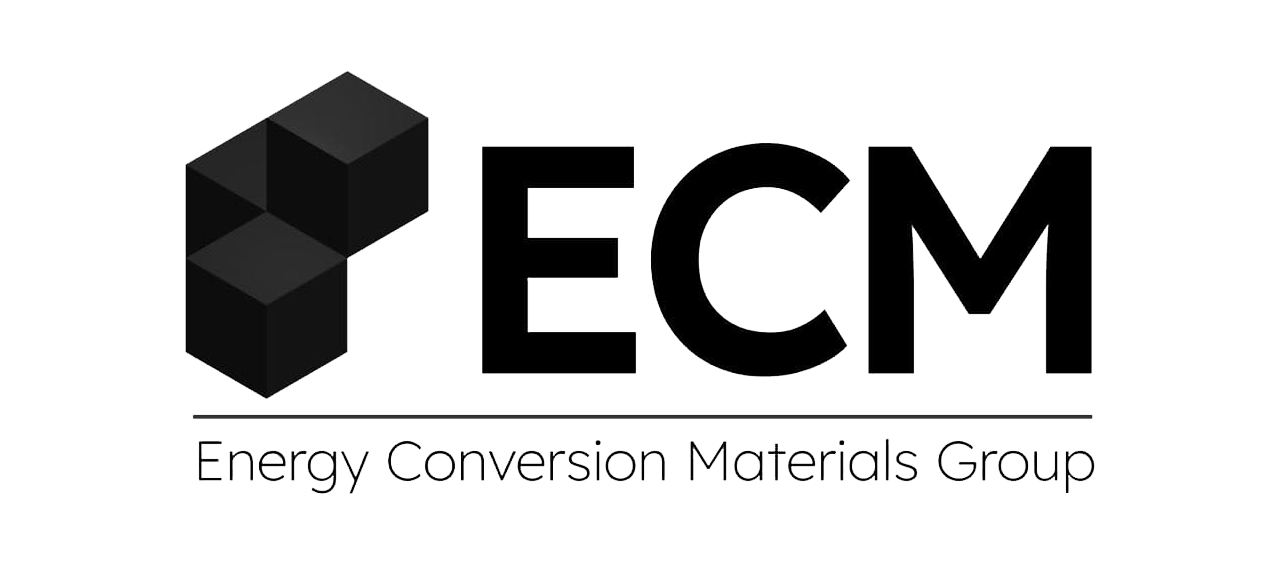Research Projects:
Design of hybrid methods of structure modification and innovative protective layers manufacturing ensuring chemical stability and corrosion protection of novel, highly effective thermoelectric materials for energy conversion
National Science Centre grant no. 2016/21/B/ST8/00409 (2017-2021)
The aim of the project is to develop innovative ways to improve chemical stability (maintaining unchanged chemical and phase composition) of selected thermoelectric materials belonging to different groups: skutterudites (CoSb3 based), silicides (Mg2Si based) and sulfides (Cu2S based) and to protect them against high temperature corrosion (oxidation) through selective doping and use of protective coatings and surface engineering, aided by advanced tools for theoretical modeling (verified and controlled by experimental studies). Limiting the adverse effects of diffusion and microstructure reconstruction will be possible by appropriate modification of chemical composition and selection of doping elements, allowing to obtain very good transport properties while maintaining their chemical stability. For protection against corrosion amorphous protective layers based on so called black glass (SiOC - silicon oxycarbide glass) as well as passivation layers will be used, which should significantly inhibit negative oxidation processes. A support for experimental studies from advanced theoretical computer simulations of observed phenomena and materials properties using high performance supercomputers will allow significant reduction of materials costs as well as time necessary to design appropriate modifications of both, thermoelectric materials and protective layers.
Synthesis and optimization of transport properties of new Cu-based superionic thermoelectric materials for thermal energy conversion to electricity.
National Science Centre grant no. 2016/23/D/ST8/00022 (2017-2021)
The aim of the project is to optimize the transport properties of new superionic thermoelectric materials based on Cu2X (X = S, Se, Te) by selecting the appropriate synthesis method and the optimal concentration of charge carriers through the introduction to Cu2X structure selected donor and acceptor admixtures from alkaline earth metals and pnictogens groups. The project also assumes the subsequent structure modification of obtained materials with the highest values of ZT parameter through the introduction of d-electron dopants with ionic radii similar to copper’s, in order to reduce their degradation due to copper ions migration.
Highly efficient thermoelectric materials for energy conversion based on doped Cu2S and Cu2Se
National Science Centre grant no. 2016/21/N/ST8/00184 (2017-2020)
The main objective of this project is to obtain novel, low-toxic and cheap Cu-based materials, characterized by excellent thermoelectric properties and high both chemical and mechanical stability. This aim will be accomplished by introducing a number of dopants (Fe, Zn, Sb and Mg) to Cu2X structures, in order to reduce an excessive Cu migration responsible for low stability and at the same time, to keep optimal transport properties. It is assumed that using different chemical compositions and various synthesis and sintering techniques, the development of optimal synthesis conditions can be achieved. By means of multi-step electrical measurements and nano-mechanical tests as a function of temperature, the stability of proposed materials will be determined.
Thermoelectric properties of selected doped AgXY2 materials and silicon clathrates - in silico research*
Ministry of Science and Higher Education grant no. DI2014 019144 (Diamond Grant program) (2015-2019)
The aim of the project is comprehensive analysis of selected materials belonging to two groups of compounds with potentially high application potential: a) chalcogenides with AgXY2 stoichiometry (where X: Sb, Sn, Pb, Y: Se, Te and xi, yi = 0 - 1) and b ) silicon clathrates. Detailed studies of the impact of the initial composition and local disorder in the host lattice (chalcogenides) as well as the type and amount of admixtures and their positions in the structure (chalcogenides and silicon clathrates) on the thermoelectric properties of the tested materials will be based on calculations of the electronic structure properties and topological properties of electron density (local features: the nature and type of chemical bonds, properties of the electron density topology - primarily critical points of bonds). Particular attention will be paid to local properties, which are usually ignored in theoretical analyzes of the thermoelectric properties of materials, or at best only mentioned, and their influence on the thermoelectric properties of materials is obviously very important. Therefore, the two above-mentioned groups of materials, characterized by a different nature of the chemical interactions occurring in them, were selected for research.
Synthesis, densification as well as structural and microstructural studies of sulfide and phosphide tetrahedrites for thermoelectric applications
National Science Centre grant no. 2018/02/X/ST5/01577 (2018)
The project is devoted to a preliminary studies focused on the development of the methods for the synthesis of homogeneous and single-phase sulphide Cu12Sb4S13 and phosphide Ag6Ge10P12 tetrahedrites obtaining them in the form of dense polycrystals by SPS (Spark Plasma Sintering) compaction. The synthesis will be carried out by the high-temperature method through a series of steps of annealing the stoichiometric mixture of reagents in quartz ampoules, during which melting, crystallization and homogenization processes will take place by means of diffusion and solid phase reactions. The obtained materials will then be compacted by means of the current assisted sintering method (FAST / SPS - Field Assisted Sintering / Spark Plasma Sintering).
Synthesis and optimization of the transport properties of new Mg2Si based materials for conversion of heat energy into electricity
National Science Centre grant no. 2012/07/N/ST8/01802 (2013-2015)
The aim goal of the project is the optimization of the transport properties of Mg2X alloys (where X = Si, Ge, Sn) by choosing the appropriate concentration of charge carriers at which the material will exhibit the highest values of thermoelectric figure of merit ZT. The authors assume that this goal will be achieved by introducing selected donor and acceptor dopants (i.a. B, Li, Ce, In) into the Mg2X structure. This is to allow obtaining a material with better thermoelectric properties, i.e. significantly higher efficiency in energy conversion compared to the undoped material.

